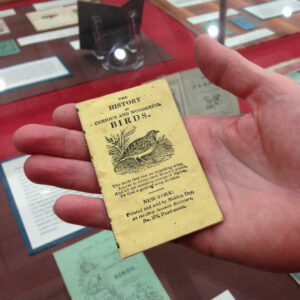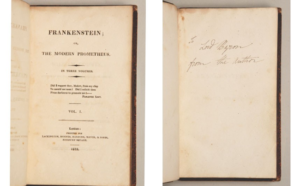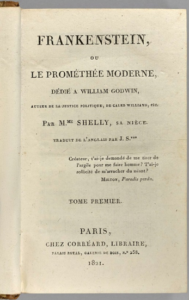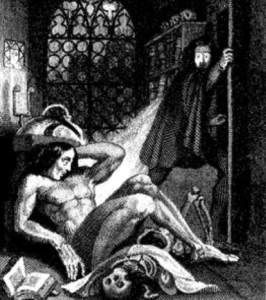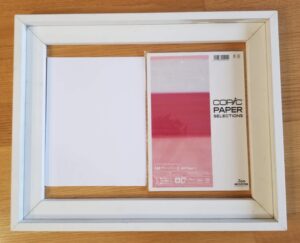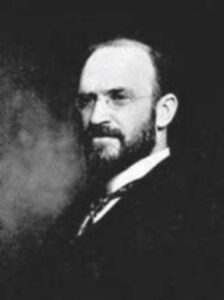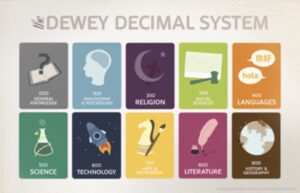Aran Kocur
The Man
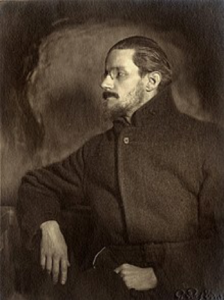
(Portrait of James Joyce c. 1918, courtesy of Wikipedia)
One of the best places to start with the novel Ulysses is a brief study of the author himself. James Joyce was an Irish novelist, poet, and short story writer born in 1882 in the city of Dublin, a home that features centrally in many of Joyce’s works, including Ulysses. To this day Joyce’s work inspires scholarly debate within classrooms and casual settings such as pubs, with Ireland generally embracing Joyce’s legacy after years of cold shoulder treatment while the man was alive. Joyce’s work also reflects his own place in a middle-class family that faced financial turmoil, as well as his eventual self-imposed exile from Ireland with his wife. Furthermore, Joyce appeared to experience a turbulent relationship with Christianity. A common aspect of Ulysses specifically, as noted by multiple scholars, is the distinct Jewish elements of both the story and particularly the character Leopold Bloom. Altogether, as is the case for endless authors today, all these aspects of real life seemed to shape Joyce’s writing in varying degrees.
The Controversy
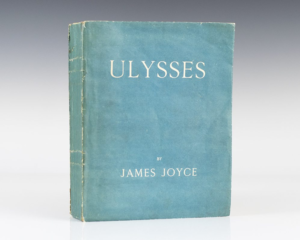
(Image of Ulysses 1922 First Edition, selling for $75,000 USD on raptisrarebooks.com)
Arguably the most well-known of Joyce’s works, Ulysses is a modernist novel originally serialized in the 19th century American literary magazine The Little Review. This particular magazine was an effort to collectively publish and showcase various modernist works, including both written works and visual art pieces. Modernism as a literary movement rising in the late 19th and early 20th centuries generally involved conscious decisions to subvert tradition and illustrate new social norms. Authors such as Joyce were transgressive and “sought to disturb social, sexual, and aesthetic complacencies” (Spoo 634) with their writing. Thus, plenty of controversy surrounded Joyce’s Ulysses before it was even printed in a single volume, making publication difficult to achieve, with publishers baulking at the work’s “obscene” content and reputation. In Thomas Staley’s words, “No novel written in this century has evoked more critical controversy or sparked such elaborate exegesis” (70).
The Printing
https://www.youtube.com/watch?v=I7NtY2ax_V8
(The video above shows the owner of Peter Harrington books handling a first edition copy of Ulysses. Peter Harrington Books is another rare and antique bookstore specializing in first editions, signed and inscribed copies, maps, and more.)
Ulysses first official collected edition in what we of the 21st century would recognize as a cohesive, modern book format was printed in Paris in 1922. Publishers such as American B.W. Huebsch were eager to exploit Joyce’s text as a lucrative financial opportunity, so long as Joyce made certain editorial changes to his work. Joyce refused. After struggling and receiving multiple refusals from different companies on different continents, Ulysses was finally published under Sylvia Beach’s Shakespeare and Company imprint. A quarto volume roughly as large as a modern phonebook, the physical copy of Ulysses is almost as impressive as its literary influence as a modern novel. One thousand numbered copies were produced featuring Joyce’s name and the work’s title on the front cover. Of these, the majority were printed on white, handmade Dutch paper. A handful of these original books are available for sale even now, with a few copies ranging from $75,000 to $150,000 USD currently offered on the website of Raptis Rare Books, a store which specializes in rare and antique books. According to a newspaper article published in The Guardian in 2009, a well-preserved copy from the original print run reportedly sold for £275,000—roughly $440,000 at the time of sale! As for the rest of 1922, after the initial print release Joyce continued making grammatical revisions, culminating in another printing in October of the same year. This version is in some ways considered the “true” first edition, as it is Joyce’s own revision and additional writing which resulted in not only a grammatically and structurally improved product, but one that grew by roughly a third of its original size when finally published collectively. Thus, Joyce did not simply change the odd word and add a handful of sentences. Since Ulysses was originally released in a serial format, it makes sense that finally gathering all the separately released parts together into a single novel might inspire an author to edit and expand their work.
The Conclusion
Ultimately, Ulysses demonstrates a historical shift in both the printing industry and the literary content of Europe. Whether one approved of or saw value in its content or not, Joyce’s work helped transform Western literature in the 20th century and was an impactful component of literary modernism. The remaining copies of that 1922 first edition are reminders of how one text may play a key role in the continuing development of the book.
Works Cited
Brown, Mark. “First edition of Ulysses sells for record £275,000.” The Guardian, 4 June 2009, https://www.theguardian.com/books/2009/jun/04/ulysses-sells-record-price. Accessed 13 Jan. 2019.
Mason, David. “CREATING A LITERARY HERO: JAMES JOYCE.” The Sewanee Review, vol. 121, no. 3, 2013, pp. 467–473. JSTOR, www.jstor.org/stable/43662714.
Raptis Rare Books. www.raptisrarebooks.com. Accessed 15 Jan. 2019.
Spoo, Robert. “Copyright Protectionism and Its Discontents: The Case of James Joyce’s
‘Ulysses’ in America.” The Yale Law Journal, vol. 108, no. 3, 1998, pp. 633–667. JSTOR, www.jstor.org/stable/797499.
Staley, Thomas. “‘ULYSSES’: Fifty Years in the Joycean Conundrum.” Mosaic: A Journal for the Interdisciplinary Study of Literature, vol. 6, no. 1, 1972, pp. 69–76. JSTOR, www.jstor.org/stable/24777092.
“Ulysses James Joyce First Edition.” Youtube, uploaded by PeterHarringtonBooks, 3 January 2016, https://www.youtube.com/watch?v=I7NtY2ax_V8.




